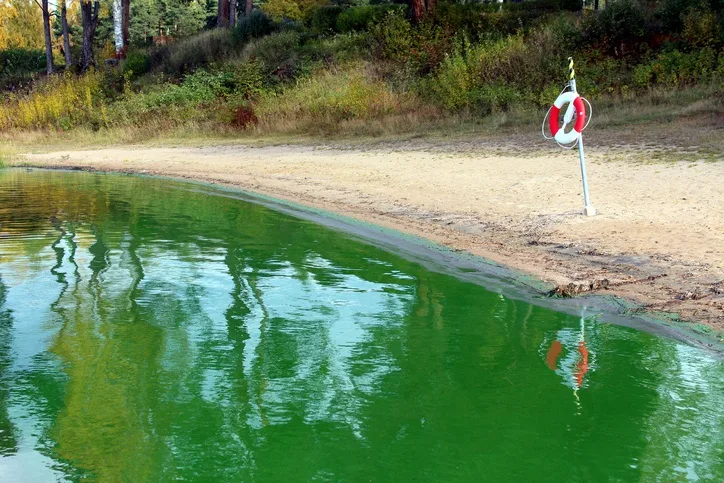
3 dogs dead after playing in pond overrun with blue-green algae
Two North Carolina women are warning the public after a visit to a local pond ended with their three dogs dying of toxic algae poisoning.
Melissa Martin and Denise Mintz brought their dogs Abby, Izzy, and Harpo to a pond in Wilmington, N.C., last Thursday to cool down, Global News reports.
Hours later the dogs collapsed and suffered a series of seizures. All three died of liver failure.
They had been exposed to blue-green algae, or cyanobacteria, which was present in the lake the dogs had played in.
"I wish I could do today over," Martin wrote in an emotional Facebook post.
"I would give anything to have one more day with them. Harpo and I had work to do, but now we will carry on in his memory and we will make sure every standing body of water has a warning sign."
Martin and Mintz now plan to visit every algae-infested body of water in their area so they can post warning signs.
WHAT IS CYANOBACTERIA?
Cyanobacteria can grow in lakes, rivers, and ponds throughout most of Canada and the U.S. and can be fueled through fertilizer runoff. The algae aren't always visible and sometimes smell like freshly-cut grass or rotting garbage, but it isn't always detectable.
There is currently a large bloom in Lake Erie that has prompted warnings. The blooms have also prompted warnings in Sudbury, Ontario.
While "normally fairly harmless in lower concentrations, blue-green algae -- also known as cyanobacteria -- pose a risk to aquatic life and human health," writes Weather Network science writer Scott Sutherland.
Dogs are especially vulnerable to exposre because they will continue to drink and play in water even if it looks dirty, the Center for Disease Control (CDC) says on its website.
“Dogs will get in a body of water even if it looks or smells bad, including when it contains cyanobacteria,” the CDC says. “Dogs are also more likely to drink the contaminated water.”
Symptoms of ingesting affected water can include:
Headaches
Diarrhea
Nausea and vomiting
Fever
Rashes
VIDEO: BLUE-GREEN ALGAE IN TORONTO | SUMMER 2018
Sources: Global News | CDC






